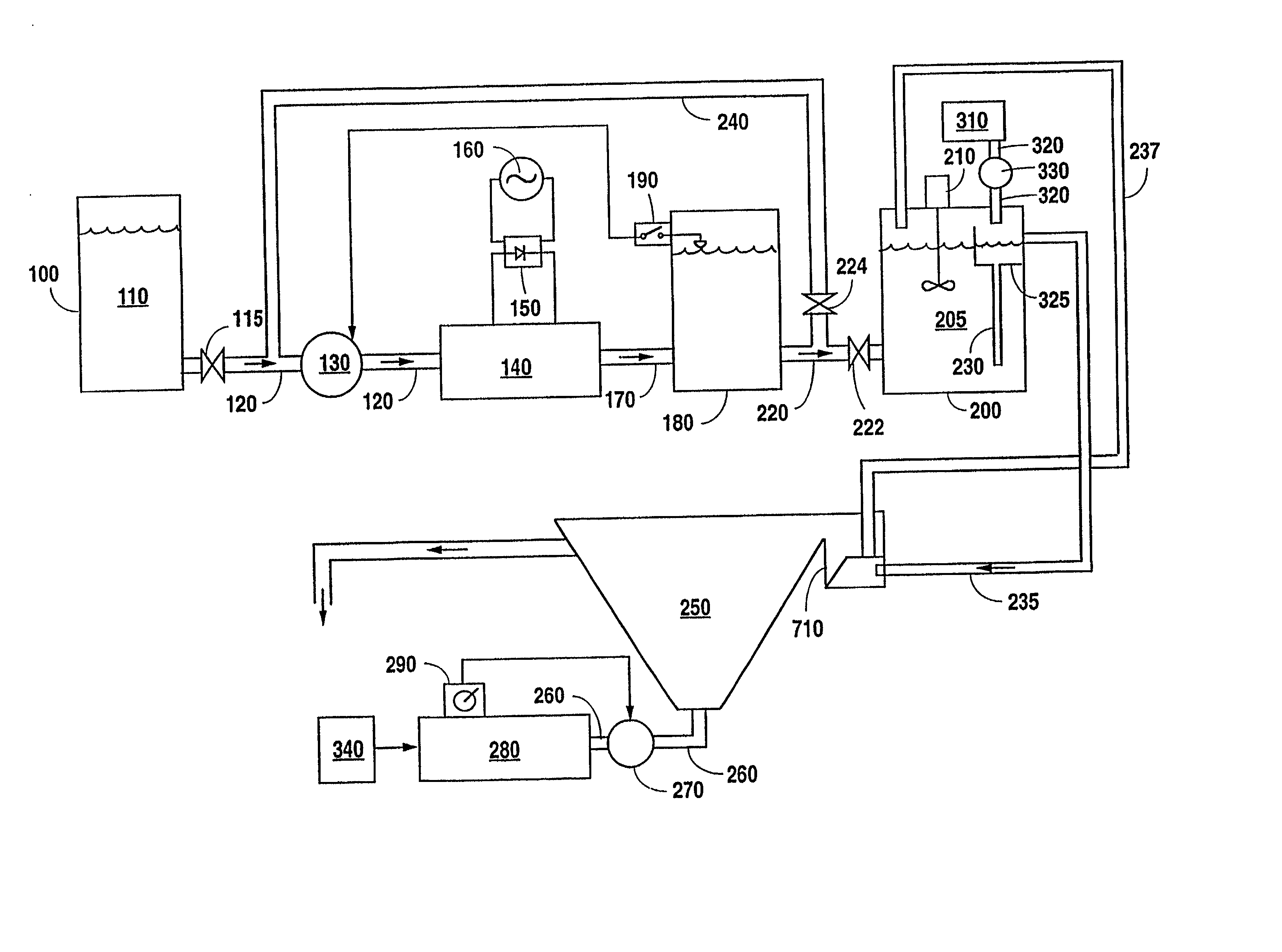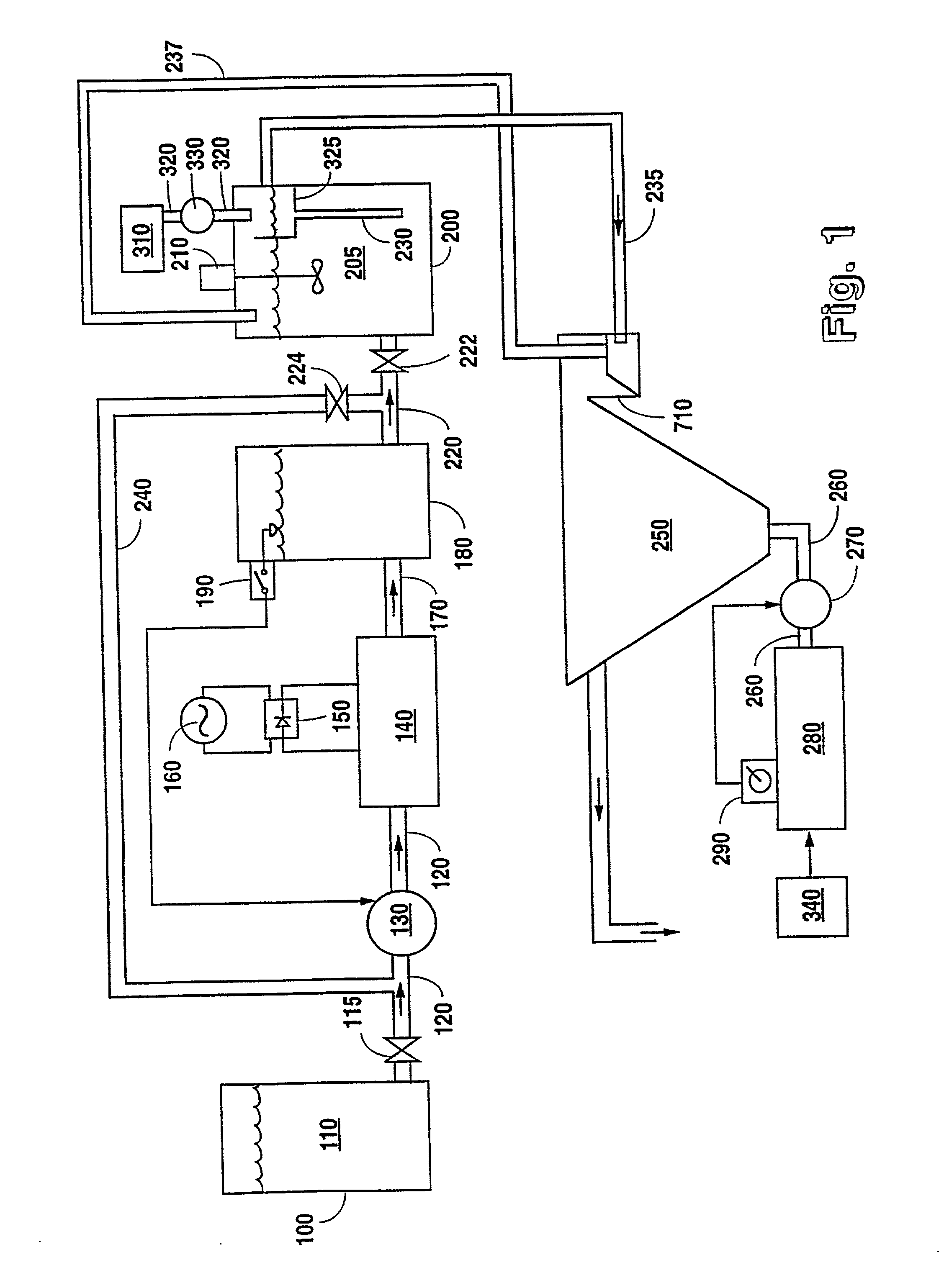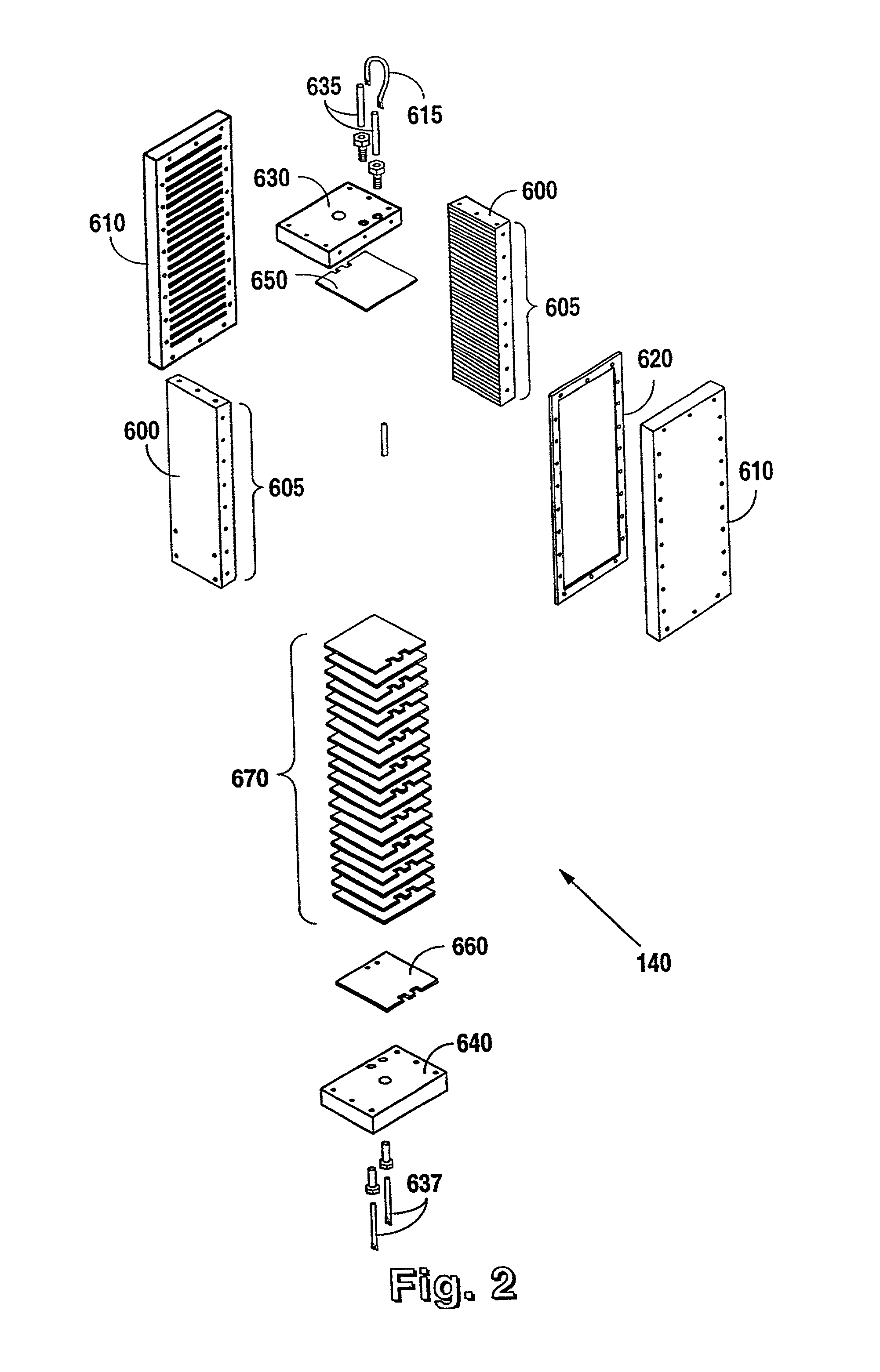Process and apparatus for electrocoagulative treatment of industrial waste water
- Summary
- Abstract
- Description
- Claims
- Application Information
AI Technical Summary
Benefits of technology
Problems solved by technology
Method used
Image
Examples
Embodiment Construction
[0061] Turning now to FIG. 1, it can be seen that waste water 110 is pumped from a waste holding tank 100 by way of holding tank valve 115 (which must be open), waste water pump 130, and waste pipe 120 into electrocoagulation reactor unit 140. Waste water 110 may also be taken directly out of another process (not shown), as it is produced, instead of from waste holding tank 100. Pump 130, which is typically a diaphragm-type, low-pressure, low volume unit, is configured to operate at a pressure such that a constant volume of waste water 110 per time interval is moved into the inlet of reactor unit 140.
[0062] Reactor unit 140 may comprise a single electrocoagulation reactor cell, or as a series of such cells, depending on the amount and composition of particulate waste present in waste water 110. The more waste which is present, the more efficiently multiple cells, operating as a series-connected fluid path, can be employed. Rectifier 150 takes alternating current from an appropriate ...
PUM
| Property | Measurement | Unit |
|---|---|---|
| Pressure | aaaaa | aaaaa |
| Flow rate | aaaaa | aaaaa |
Abstract
Description
Claims
Application Information
 Login to View More
Login to View More - R&D
- Intellectual Property
- Life Sciences
- Materials
- Tech Scout
- Unparalleled Data Quality
- Higher Quality Content
- 60% Fewer Hallucinations
Browse by: Latest US Patents, China's latest patents, Technical Efficacy Thesaurus, Application Domain, Technology Topic, Popular Technical Reports.
© 2025 PatSnap. All rights reserved.Legal|Privacy policy|Modern Slavery Act Transparency Statement|Sitemap|About US| Contact US: help@patsnap.com



